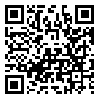Volume 23, Issue 5 (1-2022)
yafte 2022, 23(5): 52-64 |
Back to browse issues page
Download citation:
BibTeX | RIS | EndNote | Medlars | ProCite | Reference Manager | RefWorks
Send citation to:



BibTeX | RIS | EndNote | Medlars | ProCite | Reference Manager | RefWorks
Send citation to:
Hemmati-Dinarvand F, Malekshahi A, Afsharifar A, Hemmati-Dinarvand M. Employment of virus-like particles in vaccines production. yafte 2022; 23 (5) :52-64
URL: http://yafte.lums.ac.ir/article-1-3389-en.html
URL: http://yafte.lums.ac.ir/article-1-3389-en.html
Clinical Biochemistry, Department of Clinical Biochemistry, School of Medicine, Shiraz University of Medical Sciences, Shiraz, Iran
Abstract: (4341 Views)
Background: Virus-Like Particles (VLPs) are nanostructures that are similar to their native virus in shape, size, and other morphological features, except that virus-like particles lack a genome. Virus-Like Particles cause a high humoral and cellular immune response due to repetitive structures in their body. Therefore, the use of these particles increases the body's immunity during production and consumption because they lack genomic materials. Several systems may be used to generate VLPs. The choice of production platform depends on several factors, including cost and the need for Post-Translational Modifications that may be necessary to generate an optimal immune response. In addition, plant viruses, due to their structure, are well able to stimulate the mammalian immune system; on the other hand, since they are not able to infect mammals, they can be considered a subset of VLPs. Some VLP-based vaccines and plant viruses have been designed and tested to prevent several infectious diseases; however, some are in the clinical or research phase. Interest in using VLPs to produce vaccines has recently increased due to its advantages over conventional vaccines. In this review, an attempt has been made to compare the advantages and disadvantages of VLP production systems.
Type of Study: Review article / Policy brief |
Received: 2021/09/4 | Accepted: 2021/11/24 | Published: 2022/03/6
Received: 2021/09/4 | Accepted: 2021/11/24 | Published: 2022/03/6
Send email to the article author
| Rights and permissions | |
 |
This work is licensed under a Creative Commons Attribution-NonCommercial 4.0 International License. |







